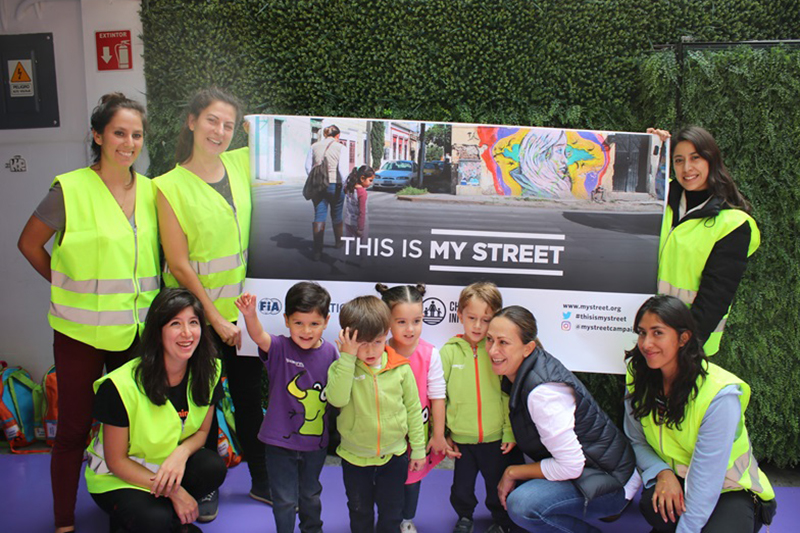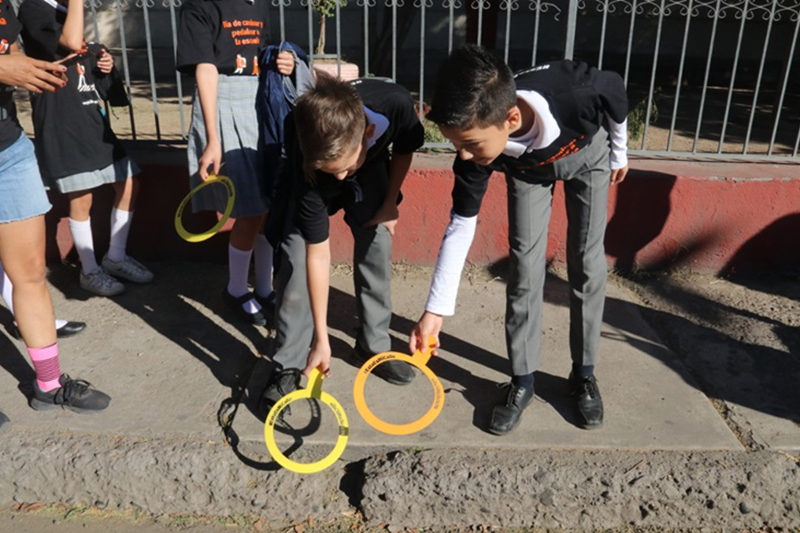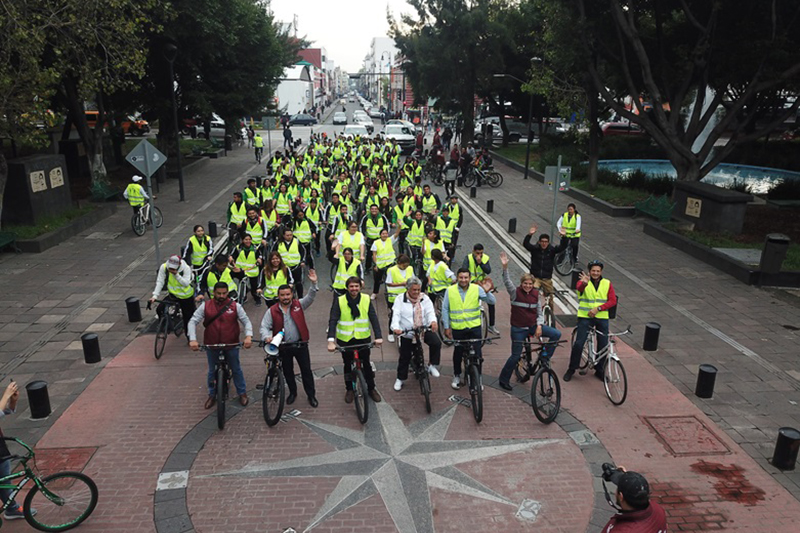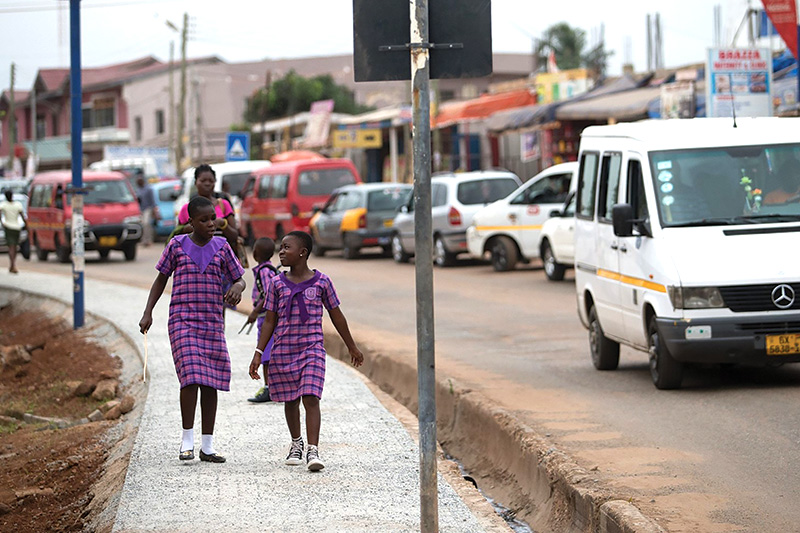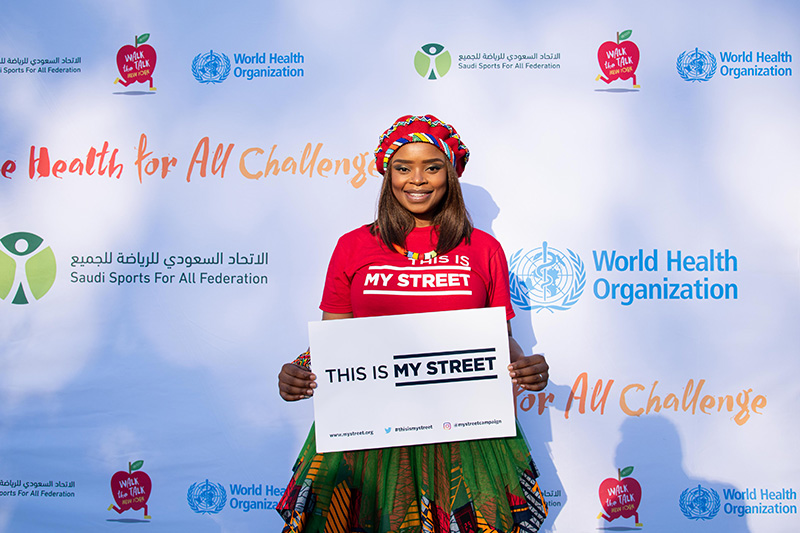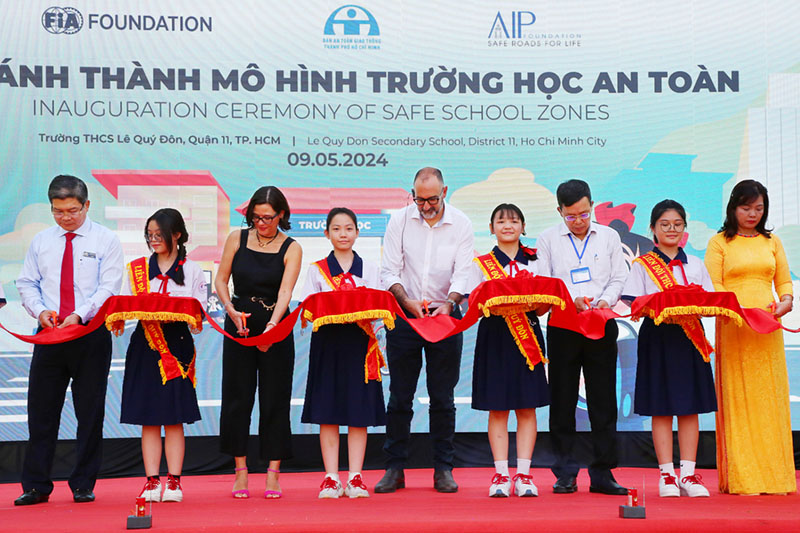Local communities promote Vision Zero for Youth in Mexican cities
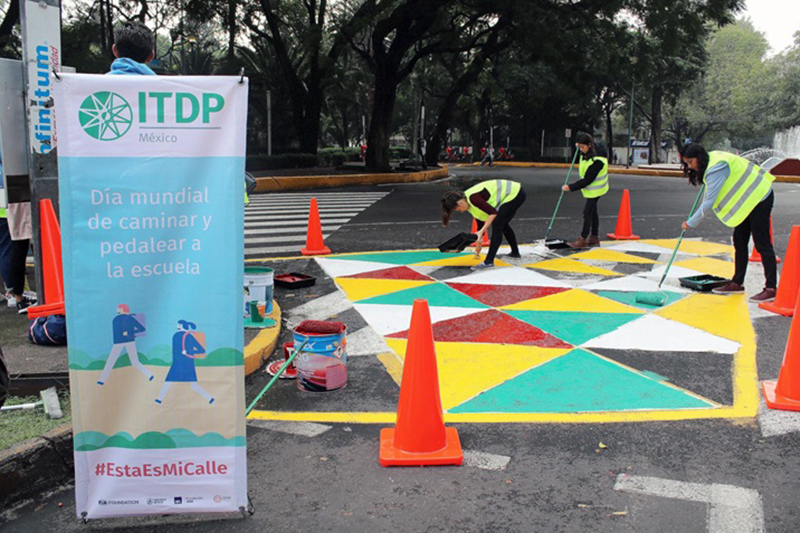
Hundreds of students have taken part in Walk and Bike to School events in Mexico, organised by the Institute for Transportation and Development Policy (ITDP) as part of their ongoing work to implement Vision Zero for Youth policies, with funding support from the FIA Foundation.
Children aged from two to 14, alongside teachers, politicians, city officials, and parents participated in a wide range of activities focussed on a modal shift to walking and biking and to highlight the current infrastructure risks which act as barriers to parents and young people choosing these modes.
In Hermosillo, north-west Mexico, several schools ran programmes to promote walking and cycling, as well as a tactical urbanism project which included painting a cycle box for children to use during on the day and going forward.
The largest activity took place in Puebla de Zaragoza at Benemérito Instituto Normal del Estado (BINE), a large public school with over 9,000 students from primary age up to high school. Most students use public transport but have to navigate dangerous infrastructure around the school, which is located in front of a risky intersection with heavy vehicle traffic, from light- and heavy-duty vehicles. The city provided bikes to 132 students in a park two kilometres from the school and arranged a group cycle with the city’s team, the director of ITDP Mexico, and the city councillor in charge of mobility. At the same time, 90 more students took part in an organised one kilometre walk to the school, accompanied by music from the entire school music band. The two groups met at the school and celebrated the event with the School Director, the Secretary of Mobility of Puebla, the local Councillor, and the Director of ITDP to discuss and highlight road safety for children on their daily journey to and from school.
In the city of San Pedro Garza García, to the north of the country, two primary schools were joined by the Director of the Municipal Institute of Planning, Guadalupe Peñúñuri, who committed to the project as she is also the leading promoter of Vision Zero in the city. Children identified key elements of the streets that they liked, such as green areas and familiarity of surroundings, as well as those they disliked or caused concern, such as small sidewalks, lack of marked crosswalks, insufficient street lighting etc, which the city government is now taking into account as it makes improvements to school zones.
Mexico City saw the youngest participants aged between two and four undertake the journey to school with their parents alongside the Directors of Citizen Participation and Mobility for the borough. Parents were able to identify the issues that concerned them and, in some cases, prevented them from using active transport with their children entirely, such as lack of visibility and high vehicle speeds, which they were able to share directly with the borough representatives. Both Directors were shown ITDP’s tactical urbanism intervention, a temporary street design to showcase infrastructure and design improvements, which has led to commit to the improvement of the area; in particular, to install speed bumps and implement a permanent intervention based ITDP’s design.
